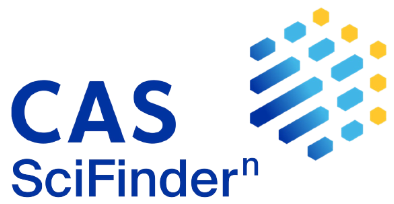The study of the three-component interaction between 1-ethyl-1H-2,1-benzothiazin-4(3H)-one 2,2-dioxide, heterylcarbaldehydes and active methylene nitriles
DOI:
https://doi.org/10.24959/ophcj.16.876Keywords:
2, 1-benzothiazine 2, 2-dioxide, heterylcarbaldehydes, active methylene nitriles, 4H-pyranes, three- component reaction, triethylammonium saltsAbstract
Some peculiarities of the three-component interaction of 1-ethyl-1H-2,1-benzothiazin-4(3H)-one 2,2-dioxide with active methylene nitriles and heterylcarbaldehydes have been described in this article. It has been found that if malononitrile is used, the products of the three-component reaction are 2-amino-4-heteryl-3-cyano-6-ethyl-4,6-dihydropyrano[3,2-c][2,1]benzothiazine 5,5-dioxides irrespective of the heteryl fragment nature in the initial aldehyde. When using ethyl cyanoacetate (as the active methylene nitrile) in the three-component interaction instead malononitrile the reaction lost its selectivity. In this case, depending on the heterylcarbaldehyde, three different types of products were obtained, namely 2-amino-3-alkoxycarbonyl-4-heteryl-4H-pyranes (for pyridine-3-, pyridine-4-carbaldehydes and furan-2-carbaldehyde), thriethylammonium salt of bis(1-ethyl-1H-2,1-benzothiazin-2,2- dioxo-4-ol-3-yl)(2-thienyl)methane (for thiophen-2-carbaldehyde) or ethyl 2-cyano-3-(1H-indol-3-yl)acrylate (for indol-3-carbaldehyde). Formation of a stable triethylammonium salts was considered as the process competitive with formation of 2-amino-4H-pyranes. It has allowes to propose the modiŸed mechanism of 2-amino-4H-pyranes formation. This mechanism includes the stage of forming triethylammonium salts of bis-adducts. According to this mechanism 2-amino-3-ethoxycarbonyl-4-(2-thienyl)-4H-pyrane without any impurity of bis-adduct could be selectively obtained using the three-component interaction. Triethylammonium salts of bis-adducts were obtained by direct interaction of 1-ethyl-1H-2,1-benzothiazin-4(3H)-one 2,2-dioxide with heterylcarbaldehydes in the presence of equimolar amounts of triethylamine. It has been shown that the three-component interaction of 1-ethyl-1H-2,1-benzothiazin-4(3H)-one 2,2-dioxide with active methylene nitriles and heterylcarbaldehydes is a more effective tool in order to obtain condensed 2-amino-4-heteryl-4H-pyranes compared to the stepwise approach.Downloads
References
- Hicks J. L., Roark W. H. WO2004014388A1, 2004.
- Hu Q.-Y., Ksander G. M. WO2008076860A1, 2008.
- Nie H., Widdowson K. L. WO 9834929, 1998.
- Catsoulacos P., Camoutsis C. J. Heterocycl. Chem., 1979, Vol. 23, No.8, pp.1503-1524.
- Muegge I. Medicinal Research Reviews, 2003, Vol. 23, No.3, pp.302-321.
- Supuran C. T., Casini A., Scozzafava A. Medicinal Research Reviews, 2003, Vol. 23, No.5, pp.535-558.
- Hanson P. R., Probst D. A., Robinson R. E., Yau M. Tetrahedron Lett., 1999, Vol. 40, No.26, pp.4761-4764.
- Moree W. J., van der Marel G. A., Liskamp R. M. J. Tetrahedron Lett., 1991, Vol. 32, No.3, pp.409-412.
- Harmata M., Calkins N. L., Baughman R. G., Barnes C. L. J. Org. Chem., 2006, Vol. 71, No.9, pp.3650-3652.
- Misu Y., Togo H. Org. Biomol. Chem., 2003, Vol. 1, No.8, pp.1342-1346.
- Fairhurst J., Gallagher P. WO 2001087881, 2001.
- Li W., Marlowe C. K., Scarborough R. M. WO 2001072725, 2001.
- Yoakim C., O’Meara J., Simoneau B., Ogilie W. W., Deziel R. WO 2004026875, 2004.
- Pieroni M., Sabatini S., Massari S., Kaatz G. W., Cecchetti V., Tabarrini O. Med. Chem. Commun., 2012, Vol. 3, No.9, pp.1092-1097.
- Ukrainets I. V., Petrushova L. A., Dzyubenko S. P., Liu Y. Chem. Heterocycl. Compd. (N. Y., NY, U. S.), 2014, Vol. 50, No.4, pp.564-572.
- Loev B., Kormendy M. F., Snader K. M. J. Org. Chem., 1966, Vol. 31, No.11, pp.3531-3534.
- Lombardino J. G. J. Heterocycl. Chem., 1972, Vol. 9, No.2, pp.315-317.
- Coppo F. T., Fawzi M. M. J. Heterocycl. Chem., 1998, Vol. 35, No.4, pp.983-987.
- Shemchuk L. A., Lega D. A., Redkin R. G., Chernykh V. P., Shishkin O. V., Shishkina S. V. Tetrahedron, 2014, Vol. 70, No.44, pp.8348-8353.
- Amirnejad M., Naimi-Jamal M. R., Tourani H., Ghafuri H. Monatsh. Chem., 2013, Vol. 144, No.8, pp.1219-1225.
- Brahmachari G., Banerjee B. ACS Sustainable Chemistry & Engineering, 2013, Vol. 2, No.3, pp.411-422.
- Shaterian H. R., Arman M., Rigi F. J. Mol. Liq., 2011, Vol. 158, No.2, pp.145-150.
- Patel V. K., Sen D. J., Patel C. N. J. Chem. Pharm. Res., 2010, Vol. 2, No.2, pp.50-56.
- Zanwar M. R., Raihan M. J., Gawande S. D., Kavala V., Janreddy D., Kuo C.-W., Ambre R., Yao C.-F. J. Org. Chem., 2012, Vol. 77, No.15, pp.6495-6504.
- Redkin R. G., Shemchuk L. A., Chernykh V. P., Shishkin O. V., Shishkina S. V. Tetrahedron, 2007, Vol. 63, No.46, p.11444-11450.
Downloads
Published
How to Cite
Issue
Section
License
Copyright (c) 2016 National University of Pharmacy

This work is licensed under a Creative Commons Attribution 4.0 International License.
Authors publishing their works in the Journal of Organic and Pharmaceutical Chemistry agree with the following terms:
1. Authors retain copyright and grant the journal the right of the first publication of the work under Creative Commons Attribution License allowing everyone to distribute and re-use the published material if proper citation of the original publication is given.
2. Authors are able to enter into separate, additional contractual arrangements for the non-exclusive distribution of the journal’s published version of the work (e.g., post it to an institutional repository or publish it in a book) providing proper citation of the original publication.
3. Authors are permitted and encouraged to post their work online (e.g. in institutional repositories or on authors’ personal websites) prior to and during the submission process, as it can lead to productive exchanges, as well as earlier and greater citation of published work (see The Effect of Open Access).












